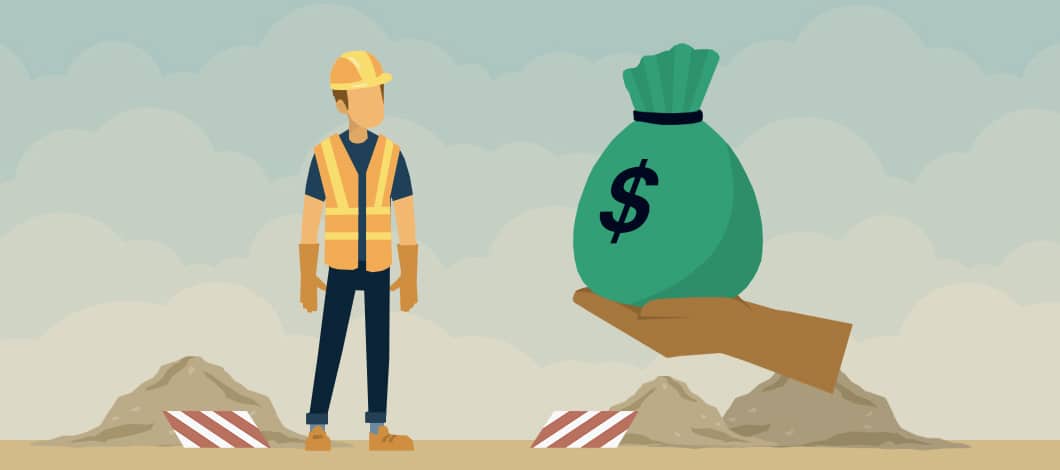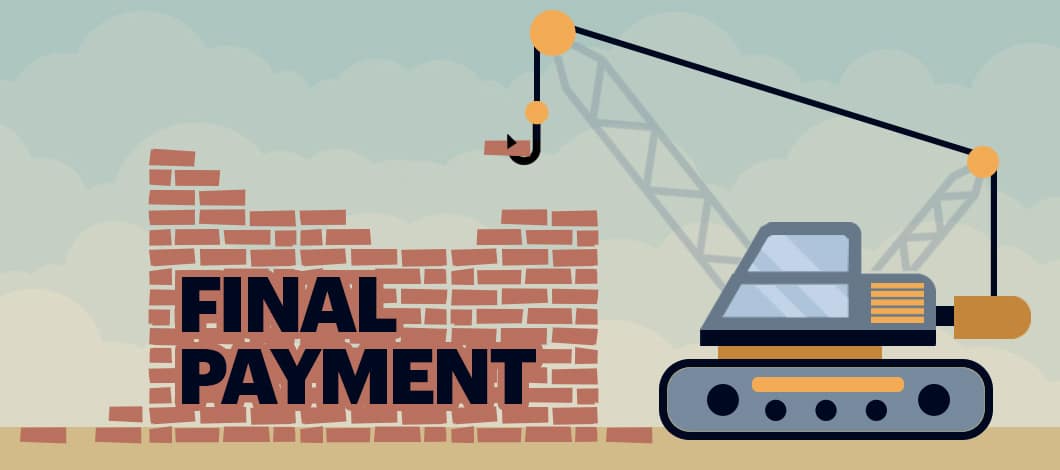What is a progress payment and how can it help you get paid faster for construction projects?
Here’s a rundown of what it is and how it works. Moreover, we’ll discuss what happens when a client misses a progress payment, which is important to know whether you’re a contractor or a property owner.
What Is a Progress Payment?
A progress payment is a method of billing for construction projects where invoices are spread out over partial payments. This provides contractors with ongoing funding for projects, helping avoid construction financing issues.
For projects involving contracts from the American Institute of Architects (AIA), progress payments also are known as AIA billing.
How Do Progress Payments Work?
Progress payments use a couple of typical construction payment schedule arrangements:
- Monthly payment scheduling
- Percentage of completion payment scheduling
Monthly payments followed a fixed schedule, whereas percent-of-completion payments are tied to project benchmarks. For example, payments might be due at the start of the project, 30% into the project, 60% into the project and upon completion of the project.
How Do Progress Payments Differ from Other Methods of Payment in Construction?
Progress payments represent 1 of the 3 most common methods of construction billing, which can be distinguished by when payments are made:
- Advanced billing, where payments are made upfront at the start of a project
- Progress billing, where payments are made during the projects
- Billing in arrears, where payments are made upon completion of a project
Advanced billing can be risky for property owners. They have to wait to get what they paid for. So do contractors, as they face the prospect of underestimating costs and getting underpaid. Arrears billing places the burden on the contractor to finance the project while they’re waiting to get paid. As the middle ground, progress billing spreads payments out in a way that balances risk more evenly between both parties.

How Does Retainage Affect Progress Payments?
Retainage refers to the amount of money a property owner withholds from the contractor until work has been completed. With progress payments, a percentage is withheld as retainage from each payment. For example, 5% might be withheld from each payment as retainage.
Depending on the arrangement, this amount may be withheld from everyone involved in the payment chain, including subcontractors and sub-subcontractors. However, materials suppliers generally are exempt.
Some construction contracts may have provisions for early partial retainage payments. For example, a subcontractor who is only responsible for an early stage of a project may be allowed to apply for a partial retainage payment when the project is partially completed, in consideration of the fact that they aren’t responsible for later stages of construction.
What Are the Pros and Cons of Progress Payments?
The biggest benefit of progress payments is that they help contractors get paid more quickly and avoid cash-flow issues. To be sure, late payments are a perennial problem in the construction industry. A survey by construction payment software provider Levelset and time-tracking software company TSheets found 92% of contractors don’t always get paid on time and nearly a third rarely get paid on time. This creates constant cash-flow anxieties for 1 in 5 construction companies, making it challenging to finance projects and pay workers.
Progress payments help alleviate this problem by bringing cash in while a project is still being worked on. They make it possible to spot payment issues earlier, too. If you aren’t getting paid on time, you have leverage to stop work until your client catches up on payments.
Progress Payment Cons
One inconvenience of progress payments is that you have to track costs carefully on an ongoing basis, which can become time-consuming. However, using project cost management software such as Oracle Primavera can help you resolve this issue by automating the process.
Another potential drawback? When you’re getting paid based on the percentage of work done, disputes can arise about how much of a project has actually been completed. The best way to avoid such disputes is to document all work and expenses carefully. With that in mind, project cost management software can assist you with this issue as well by helping you automate the process of documenting activity and expenditures.
How Do You Do Progress Billing?
Implementing progress billing essentially involves 4 major steps:
- Negotiating a construction contract that specifies progress billing for payments
- Planning payment milestones
- Tracking and documenting progress
- Invoicing and collecting payments
1. Negotiating Progress Billing Into Your Contract
The first step is negotiating progress billing into your contract. If progress billing is standard in your industry and your client is used to it, this may be simple. If not, you may need to explain the advantages of progress billing to your client.
2. Planning Payment Milestones
The next step is planning your payment milestones. To do this, you’ll first need to plan your project schedule in detail. You and your client can then determine how many monthly payments to schedule, if you’re going with a monthly plan, or what milestones represent payment invoicing dates, if you’re getting paid based on project completion percentage.
3. Tracking and Documenting Progress
As you begin work on the project, it’s important to keep careful records on your progress. This will help you demonstrate progress to your client, discouraging disputes and protecting you if disagreements arise.
4. Send Invoices and Collect Payments
As you reach progress benchmarks, you can send out invoices and collect payments.
The construction industry uses a number of standard progress claim construction template formats for invoicing, such as the ConsensusDocs 710 form series, available from construction industry coalition ConsensusDocs, and the AIA-G702 Application and Certificate for Payment, available from the AIA through AIA Contract Documents.
You can use such models to create your own in-house progress billing template for construction. Invoices should document key details, including:
- The original contract amount due
- Any updates to the amount due based on scope changes
- The percent of work completed to date
- The balance paid to date
- The current amount due
- The remaining balance due
Note that the final payment due will include any retainage owed.

So, What Happens If Someone Misses a Progress Payment?
A missed progress payment triggers actions designed to place pressure on the property owner to catch up on their payments.
Initial actions may include stoppage of work and the sending of a notice of intent to lien. Failure to respond to a notice of intent to lien may escalate the situation into an actual declaration of a lien on the property, known as a mechanic’s lien, which claims the property as collateral to cover payment owed. This combination of pressure is intended to discourage missed payments and encourage property owners to catch up on overdue payments.
So, here’s the bottom line: Property owners who miss payments should immediately contact their contractor to discuss a solution.
Use Progress Billing to Get Paid Faster
Progress billing spreads construction payments out over partial payments triggered by monthly due dates or project completion milestones. Note that this differs from construction billing methods which collect payment in advance or upon completion of projects. Progress payments can help you keep cash flowing throughout a project, making it easier to avoid cash-flow crunches which can impede your ability to finance projects.
Progress billing can be combined with other forms of construction financing such as equipment financing, to help you cover expenses and keep projects moving forward. If you require financing assistance and you’re wondering what resources may be available to you, take a few minutes to fill out our free, no-obligation prequalifying application.










